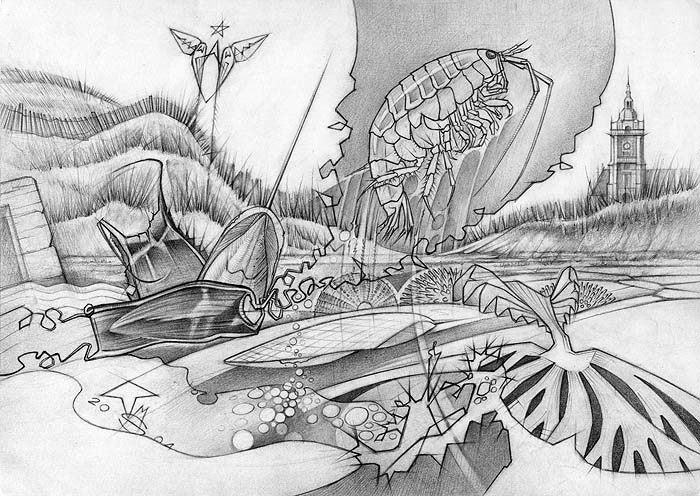click to see bigger print version!
Amongst algae pulled up by the waves after the winter storms, we can find the remains of life such as different shells and carapaces, also empty capsules of dogfish eggs called in French "Bourse de sirène" (Siren's purse) or ray eggs called "Bourse du diable" (devil's purse). Shells of cuttlefish are very common. On one of these 'bones, I have added a long and thin rostrum just for esthetic. This mollusc which approaches the coast in spring, lives only for two years and generally dies after reproduction. This
drawing is inspired by walking on a long sandy shore near
Lampaul-Ploudamézeau
(North Finistère) (seeing this nice granite bell tower). There we can
find another kind of building: a blockhaus. |
image © Michel Salaün 2004
